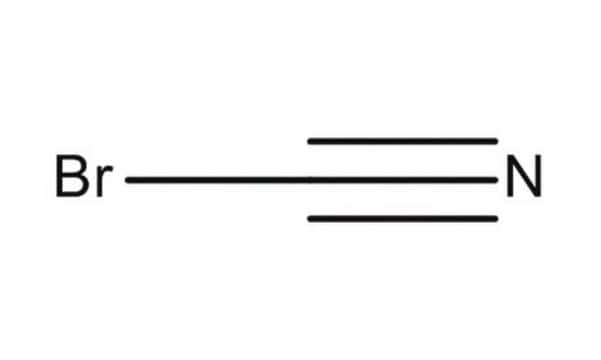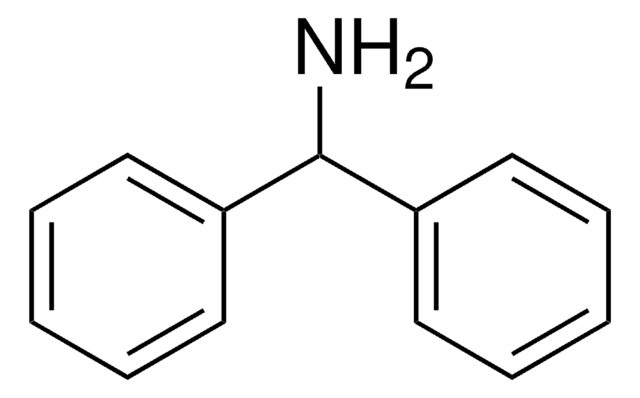341894
Cyanogen bromide solution
3.0 M in methylene chloride
About This Item
Produits recommandés
Forme
liquid
Concentration
3.0 M in methylene chloride
Solubilité
alcohol: freely soluble
diethyl ether: freely soluble
water: freely soluble
Densité
1.443 g/mL at 25 °C
Chaîne SMILES
BrC#N
InChI
1S/CBrN/c2-1-3
Clé InChI
ATDGTVJJHBUTRL-UHFFFAOYSA-N
Vous recherchez des produits similaires ? Visite Guide de comparaison des produits
Description générale
Application
Mention d'avertissement
Danger
Mentions de danger
Classification des risques
Acute Tox. 2 Inhalation - Acute Tox. 2 Oral - Acute Tox. 3 Dermal - Carc. 2 - Eye Dam. 1 - Skin Corr. 1B - STOT SE 3
Organes cibles
Central nervous system
Risques supp
Code de la classe de stockage
6.1B - Non-combustible acute toxic Cat. 1 and 2 / very toxic hazardous materials
Classe de danger pour l'eau (WGK)
WGK 3
Point d'éclair (°F)
Not applicable
Point d'éclair (°C)
Not applicable
Équipement de protection individuelle
Faceshields, Gloves, Goggles, type ABEK (EN14387) respirator filter
Certificats d'analyse (COA)
Recherchez un Certificats d'analyse (COA) en saisissant le numéro de lot du produit. Les numéros de lot figurent sur l'étiquette du produit après les mots "Lot" ou "Batch".
Déjà en possession de ce produit ?
Retrouvez la documentation relative aux produits que vous avez récemment achetés dans la Bibliothèque de documents.
Notre équipe de scientifiques dispose d'une expérience dans tous les secteurs de la recherche, notamment en sciences de la vie, science des matériaux, synthèse chimique, chromatographie, analyse et dans de nombreux autres domaines..
Contacter notre Service technique









